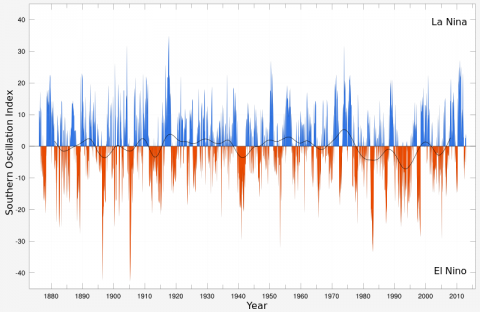Los incendios en el sureste de Australia (tanto la frecuencia como la superficie quemada) dependen de El Niño-Oscilación del Sur (ENOS). Este hecho constituye una fuente potencial de predictibilidad para la predicción estacional.
Esta relación ha sido estudiada recientemente en el trabajo ENSO controls interannual fire activity in southeast Australia publicado por investigadores de la Universidad de Melbourne:
El Niño–Southern Oscillation (ENSO) is the main mode controlling the variability in the ocean-atmosphere system in the South Pacific. While the ENSO influence on rainfall regimes in the South Pacific is well documented, its role in driving spatiotemporal trends in fire activity in this region has not been rigorously investigated. This is particularly the case for the highly flammable and densely populated southeast Australian sector, where ENSO is a major control over climatic variability. Here we conduct the first region-wide analysis of how ENSO controls fire activity in southeast Australia. We identify a significant relationship between ENSO and both fire frequency and area burnt. Critically, wavelet analyses reveal that despite substantial temporal variability in the ENSO system, ENSO exerts a persistent and significant influence on southeast Australian fire activity. Our analysis has direct application for developing robust predictive capacity for the increasingly important efforts at fire management.
Imagen extraída de wikimedia.

